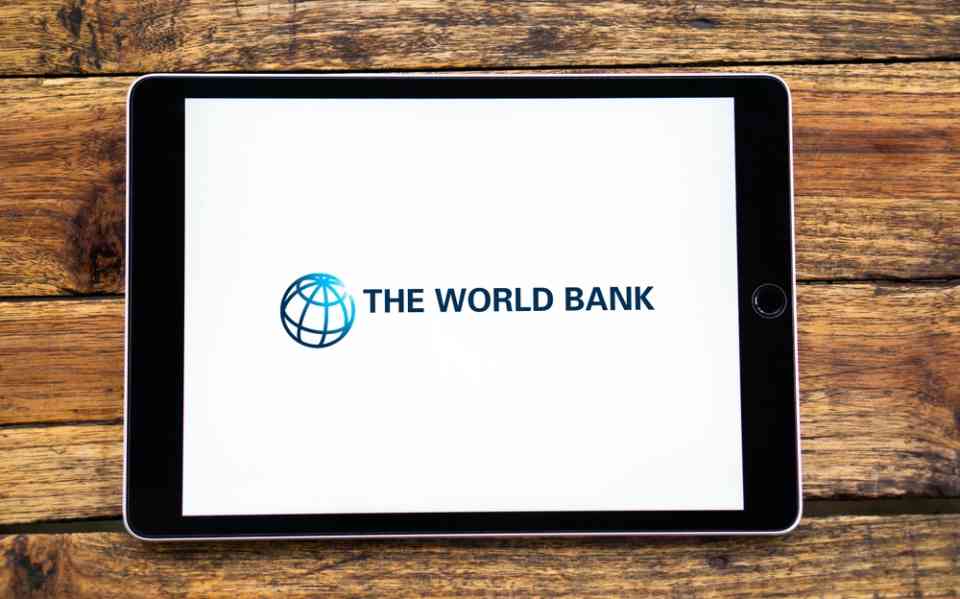World Bank on Developing Economies at a Crossroads: The Challenge of Sustaining Growth in a Complex Global Landscape

According to the latest Global Economic Prospects report from the World Bank, developing economies—responsible for driving 60% of global growth—are anticipated to close the first quarter of the 21st century with the weakest long-term growth forecast since the early 2000s. While the global economy is expected to stabilize over the next two years, the pace of progress in these economies is projected to lag, preventing them from significantly narrowing the income disparity with advanced nations.
Global economic growth is predicted to maintain a steady rate of 2.7% annually in 2025 and 2026, mirroring 2024’s pace, as inflation eases and interest rates gradually decline. Developing economies are also forecast to grow by approximately 4% per year during this period—a notable deceleration compared to pre-pandemic levels. This performance is insufficient to address key challenges like poverty reduction and sustainable development goals.
The report offers the first comprehensive review of developing economies’ performance during the 21st century’s initial 25 years. During the 2000s, these economies experienced their fastest growth since the 1970s, but momentum slowed following the 2008-09 global financial crisis. Economic integration across borders weakened, with foreign direct investment (FDI) inflows into developing economies shrinking to nearly half their early 2000s share of GDP. Trade barriers also surged, with restrictions in 2024 being five times higher than the annual average from 2010-2019. Consequently, growth rates dropped from 5.9% in the 2000s to 5.1% in the 2010s and further to 3.5% in the 2020s. Since 2014, per capita income growth in most developing economies—excluding China and India—has been significantly outpaced by that of advanced economies, exacerbating global inequality.
Indermit Gill, Chief Economist and Senior Vice President for Development Economics at the World Bank remarked that the coming 25 years would present greater challenges for developing nations compared to the previous quarter-century. The report highlights how these economies, which now account for roughly 45% of global GDP (up from 25% in 2000), have become deeply interconnected. Nearly 40% of their exports are traded with other developing nations—double the share in 2000—and they contribute significantly to global capital flows, remittances, and development aid. Between 2019 and 2023, they accounted for 40% of worldwide remittances, compared to just 30% in the 2000s.
This growing interdependence means that growth in major developing economies like China, India, and Brazil has a ripple effect, boosting GDP in other developing nations. However, the impact of these economies’ growth remains smaller compared to that of advanced economies like the United States, the euro area, and Japan, underscoring the continued reliance of developing nations on wealthier global players.
The report also highlights significant challenges ahead. Persistent global policy uncertainty could dampen investor confidence and limit financial inflows, while rising trade tensions may slow international growth. Additionally, inflationary pressures could delay interest rate reductions, further complicating the economic outlook. Despite these obstacles, the report points out potential upsides, such as stronger-than-expected growth in the United States due to robust consumer spending or additional stimulus measures in China boosting demand, which could yield positive spillover effects for developing economies.
- Ayhan Kose, Deputy Chief Economist and Director of the Prospects Group at the World Bank, emphasized the need for transformative policies to address these challenges. He noted that bold cross-border initiatives could help developing economies unlock untapped opportunities for cooperation. By addressing infrastructure deficits, advancing the climate transition, and investing in human capital, these nations can simultaneously improve growth prospects and meet long-term development goals. On a global scale, collaboration on strengthening trade governance, supported by multilateral institutions, is essential to fostering a more resilient global economy.
Regional Growth Outlooks:
- East Asia and the Pacific: Growth is expected to slow to 4.6% in 2025 and 4.1% in 2026.
- Europe and Central Asia: Growth is projected to ease to 2.5% in 2025 before recovering slightly to 2.7% in 2026.
- Latin America and the Caribbean: Economic expansion is expected to reach 2.5% in 2025 and 2.6% in 2026.
- Middle East and North Africa: Growth is forecast to rise to 3.4% in 2025 and 4.1% in 2026.
- South Asia: Growth is anticipated to climb to 6.2% in both 2025 and 2026.
- Sub-Saharan Africa: Growth is set to improve to 4.1% in 2025 and 4.3% in 2026.
In summary, while developing economies are increasingly shaping global growth, they face mounting challenges as they navigate an uncertain global environment. Strategic policy measures, both within individual economies and through international cooperation, will be vital for turning obstacles into opportunities and achieving sustainable development in the decades ahead.
Have you read?
What Business Leaders Can Learn from Top Sporting Event Athletes.
African countries with the highest number of internally displaced persons (IDPs)
Revealed: Countries With the Largest Forex Reserves.
Eric Spofford Is Turning People’s Lives Around as a Business Athlete.
Countries buying the most Black Hawk helicopters.
Bring the best of the CEOWORLD magazine's global journalism to audiences in the United States and around the world. - Add CEOWORLD magazine to your Google News feed.
Follow CEOWORLD magazine headlines on: Google News, LinkedIn, Twitter, and Facebook.
Copyright 2025 The CEOWORLD magazine. All rights reserved. This material (and any extract from it) must not be copied, redistributed or placed on any website, without CEOWORLD magazine' prior written consent. For media queries, please contact: info@ceoworld.biz








